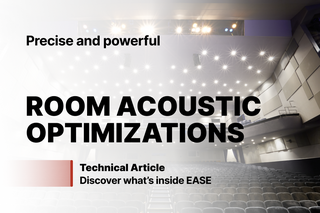
Introduction & Project Overview
The magnificent Teatro Colón in Buenos Aires, Argentina, has stood as an icon of performance excellence since 1908, replacing its earlier 1857 structure. Widely recognized by experts as one of the world's best acoustic venues, this historic gem underwent an extensive renovation between 2006 and 2010. The challenge was to preserve its world-renowned acoustic quality while modernizing its infrastructure. To achieve this, acoustic consultants Rafael Sánchez Quintana and Gustavo Basso conducted detailed measurements during every stage - 10 phases of demolition and 10 phases of reconstruction - ensuring that the original sound conditions were perfectly replicated.
Using this invaluable data, Ana Jaramillo and Bruce Olson from Olson Sound Design developed an advanced EASE acoustic model to simulate and analyze the acoustics and create auralizations of both measured and simulated impulse responses. These auralizations allowed to evaluate their accuracy and reliability as a tool for both design and analysis.
Challenge
The biggest challenge was the calibration of the model. After calibrating for an initial condition, the model had to also match every following change. The selection of materials with appropriate coefficients rather than an artificial fit of the RT curve, resulted in 17 iterations of the model, each with a run of 3 AURA responses, which would take a couple of hours due to the model complexity and the settings used to obtain good responses for auralization.
Project Execution & Results
🎧 150 auralization files were produced, combining simulated and measured responses from various points in the venue. The simulations did not include some low-end frequencies, those below 100 Hz - a limitation of EASE’s earlier bandwidth (now expanded by EASE 5’s full-bandwidth Acousteer engine). It occasionally led to slightly higher speech clarity and a brighter musical tone than the real-world acoustics. Nevertheless, the simulations beautifully recreated the evolving acoustic character of the theater at all stages of reconstruction, and showed an impressive similarity to the real measurements.
Auralizations are not perfect replicas of live sound - think of them like artistic renderings versus photographs. But they remain invaluable as a reference during the intricate process of acoustic design and for verifying solutions. In this case, auralizations as a tool as well as EASE simulation software proved their worth, delivering reliable results for acoustically complex and nuanced venue such as the beautiful Teatro Colón.











